Using FX Pedals with Clarinet and Saxophone in a Live Setting
by Sylvain Carton
Date Posted: August 23, 2022
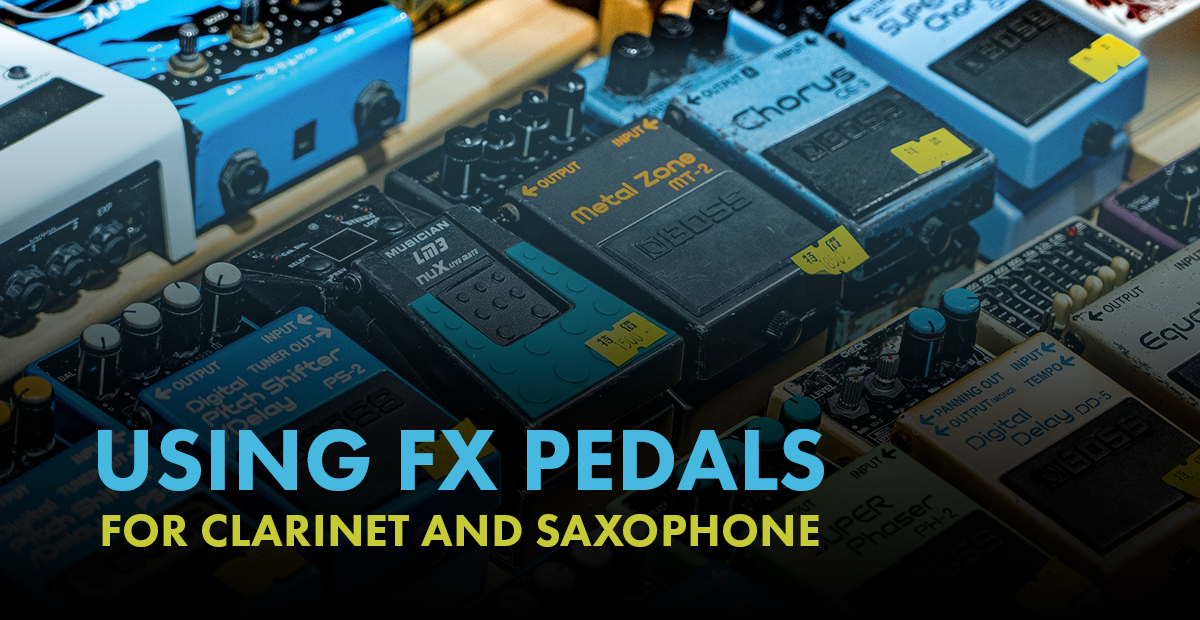
Although using effects with woodwinds in a live setting is nothing new, the prevalence of effects in the woodwind world has grown tremendously in the last decade. There are a multitude of ways to mic a saxophone or a clarinet and run it through effects, but the most versatile and effective way, in my opinion, is to have an internal microphone.
There are several advantages to using an internal mic versus a standard mic or clip on mic.
First, and most importantly, the signal the microphone is picking up from the instrument is going to be much louder than any external sounds, which in turn will dramatically limit any outside noise being picked up by your instrument mic (i.e. drums, amps, p.a., etc...). Not only does this reduce the occurrence of feedback (especially when using distortions, compressors, and delays) but it allows you to have a very isolated sax/clarinet sound to run through your pedals free of any miscellaneous stage/room sounds (i.e. drums, amps, other horns).
As a result, the signal you are sending to the effects pedals will be very even and the fundamental of each note will be very strong. This means that any pitch modulation pedals (octave pedals, harmonizers, etc...) will have little to no problems picking out the fundamental and should behave as you'd expect. High gain pedals (distortion, fuzz, etc…) will not be as prone to feedback as they would with a standard mic placed outside of the instrument, and delays and reverbs will not pickup external sounds from louder instruments (drums, electric guitar, etc…).
Microphone Options
There are currently several options easily, albeit not cheaply, available for internal miking. For the last 15 years I have used Pasoana internal microphones (a type of piezo mic) that I have mounted onto my saxophone mouthpieces and on my clarinet barrel. This method does require some drilling into your mouthpiece/clarinet barrel and may scare some folks off.
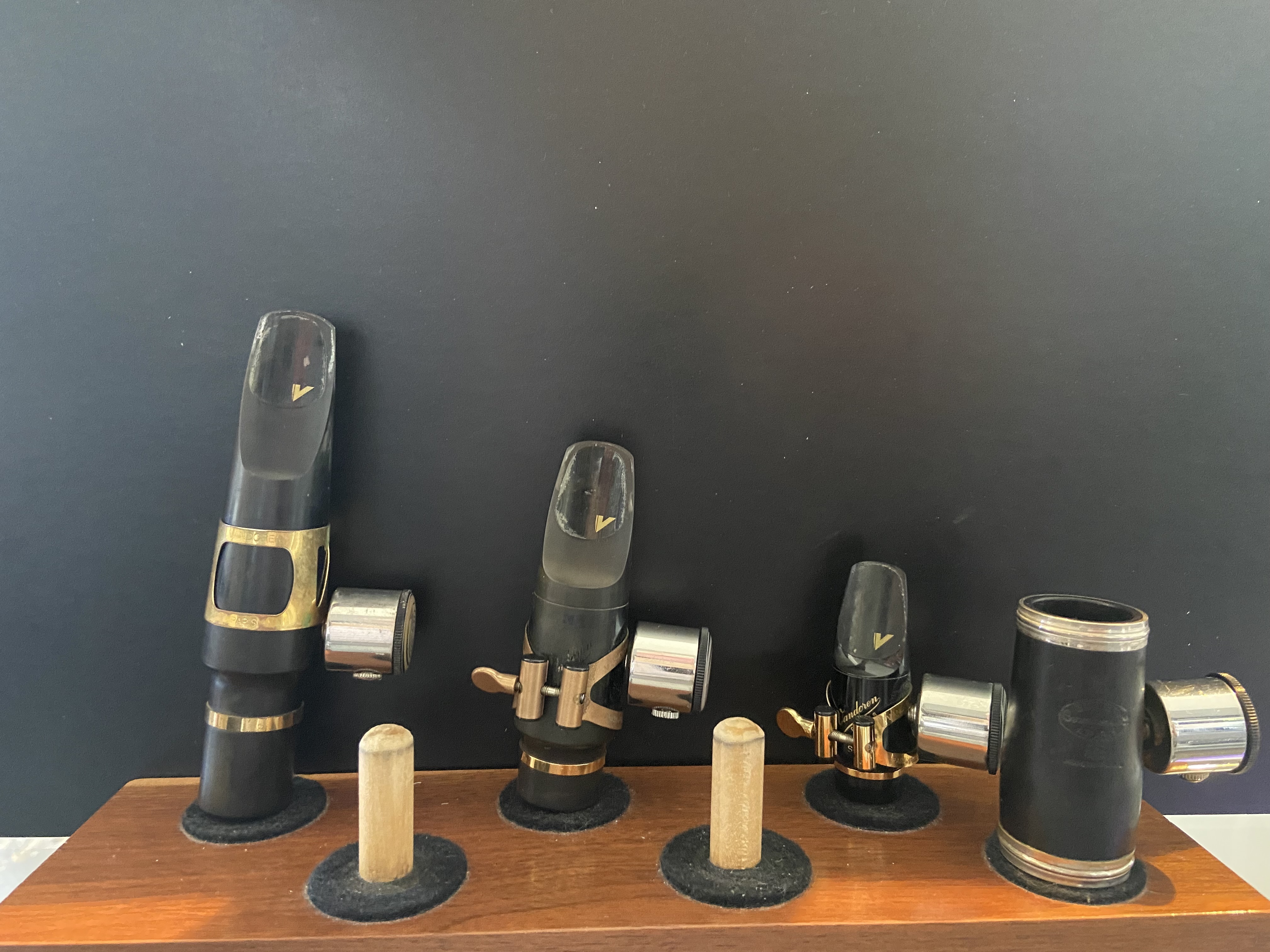
Sylvain's Pasoano Examples
Although Pasoana microphones do not exist anymore there are still a few companies that make a similar type of mic (Rumberger, Nalbantov, PiezoBarrel, etc...) and they are priced anywhere from $100 - $400. Although I have not tried them out myself, the Nalbantov pickups look and sound the closest to the Pasoana mics I’ve been using.
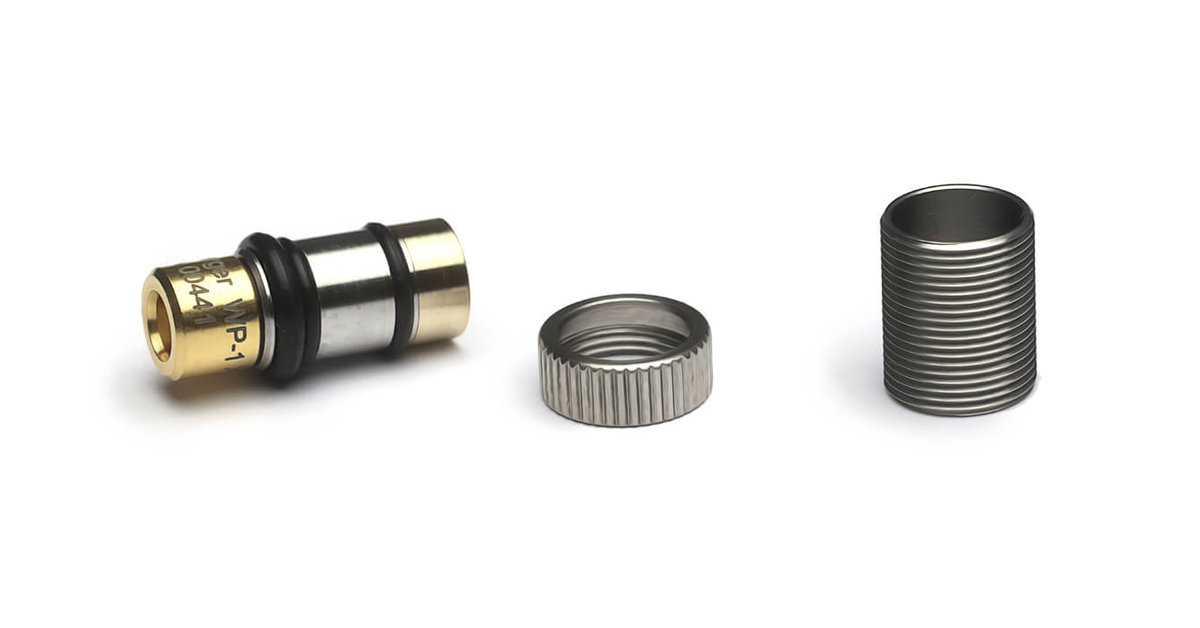
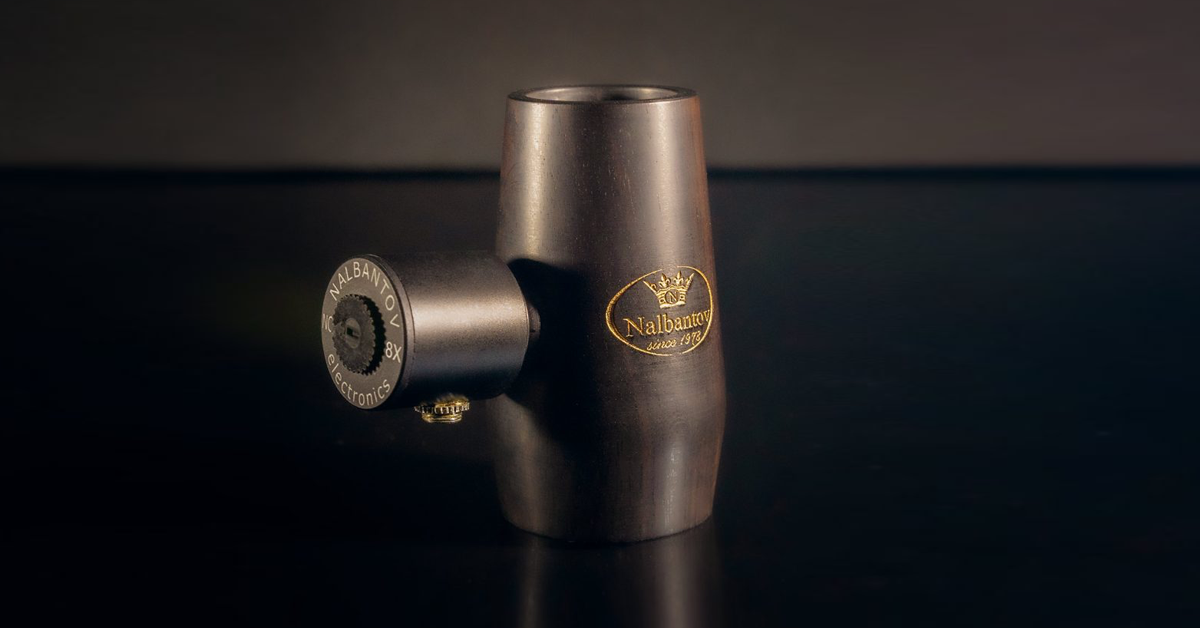
Nalbantov
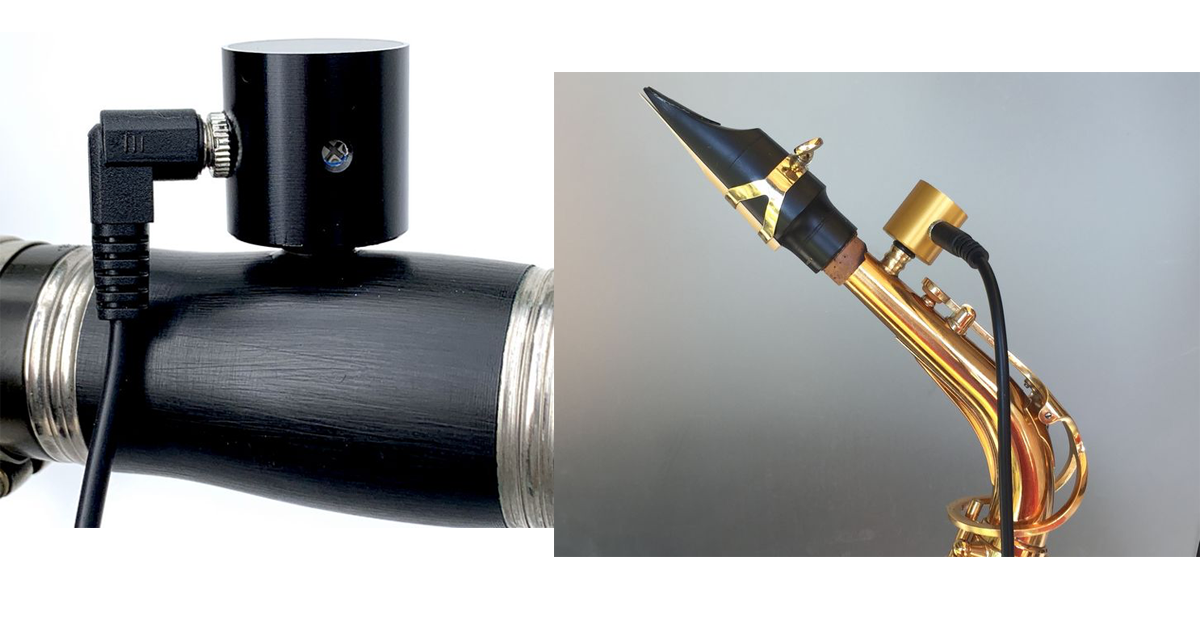
Another option more recently developed, and a bit more expensive at around $750, is the IntraMic which is a small condenser microphone that is placed in the opening of the neck of the saxophone (in the barrel on clarinet) and is connected to a small preamp that attaches to your instrument via a small cable that fits between your cork and mouthpiece. This is currently my favorite internal mic primarily because the natural tone of the instrument is very close to that of a nice external mic. This may also be the most convenient setup for many since it does not require any drilling.
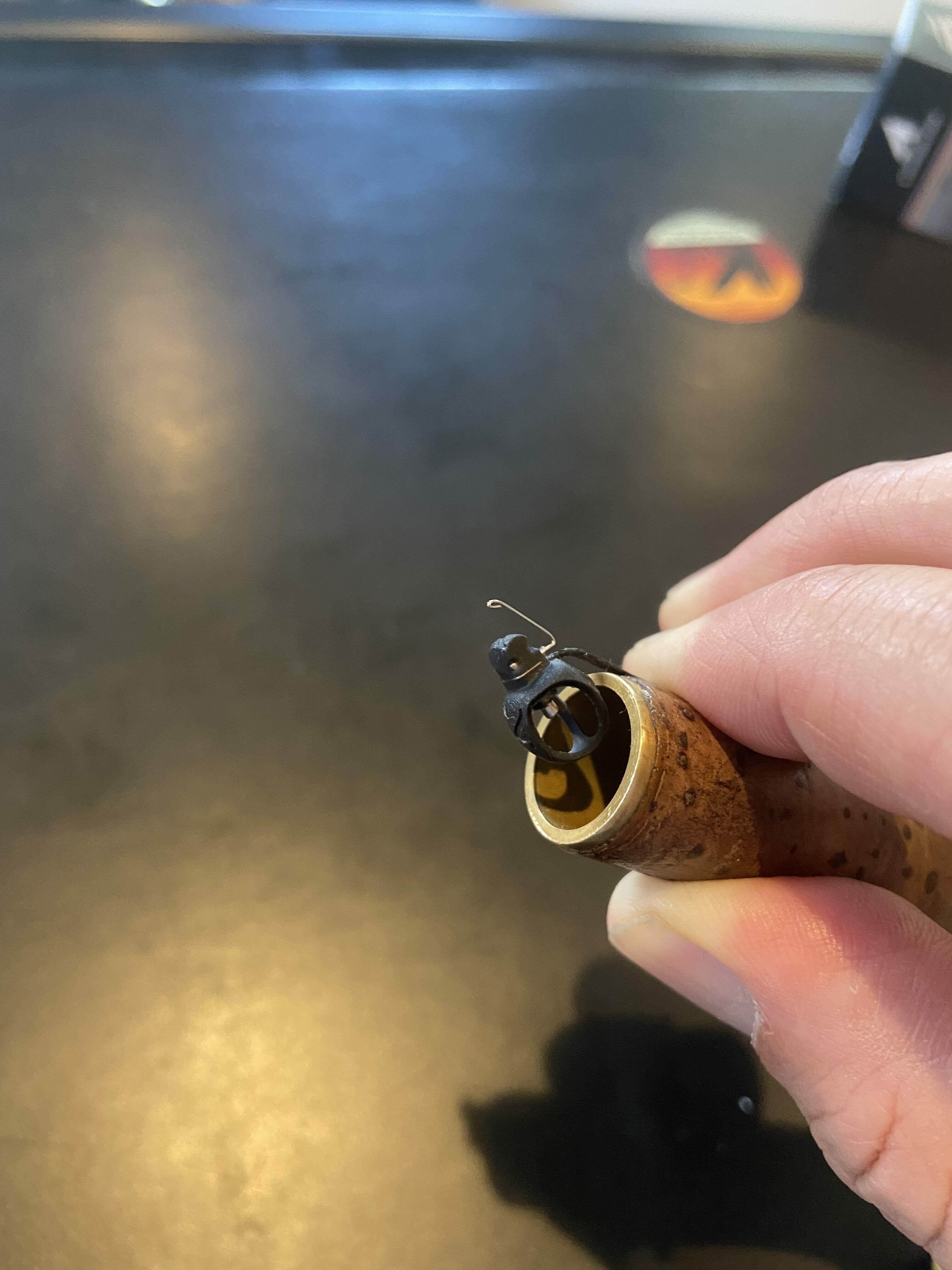
Sylvain's IntraMic
With all internal microphones I find that it does take a little time to get used to the response of your instrument. Because they are capturing the sound inside the mouthpiece, every note on your instrument will tend to have the same presence and body, which isn’t completely natural. If you do find that the natural saxophone tone and response from any of internal microphones is not as satisfying as a nice stage mic, I recommend using the internal mic specifically for the effects and using your favorite stage mic for the natural sound of the instrument.
"...the prevalence of effects in the woodwind world has grown tremendously in the last decade." -Sylvain Carton
I chose my current mic setup to give my saxophones and clarinets the functionality of an electric guitar. I wanted to be able to grab a guitarist's cable and plug into whatever pedals/amps they were going through. This requires a line-level signal as opposed to a mic-level signal.
When using a conventional stage mic (i.e. Shure SM58/57) for your effects, you may need a D.I. box to change the impedance from low to high so that your signal from the microphone matches that of a guitar. Adding a D.I. to your own setup isn't too difficult or costly, but it is something to consider.
If you are using a mic that requires phantom power you will also need to consider a preamp situation to amplify the signal from the microphone. My Pasoana microphones do not require phantom power, but the Rumberger and the Intra-mic both do. The IntraMic however comes with a tiny preamp that can be fixed to your instrument, making it easy to get started plugging into pedals.
Using Pedals
Once you decide which type of miking situation you would like to have the fun part begins - choosing which effects you'd like to use and setting up your signal chain! I don't have one specific pedal setup that I use for every situation as I modify which pedals, and the amount of pedals, I use depending on the musical situation I am in. However, the general order of effects does remain the same. Here is a general rundown of how I like to organize my pedal signal flow:
EQ - Pitch modulation pedals - gain/distortions/fuzz -wahs - delays/alternate reverbs - vibrato - looper - volume pedal - main reverb - compression– output to amp or D.I.
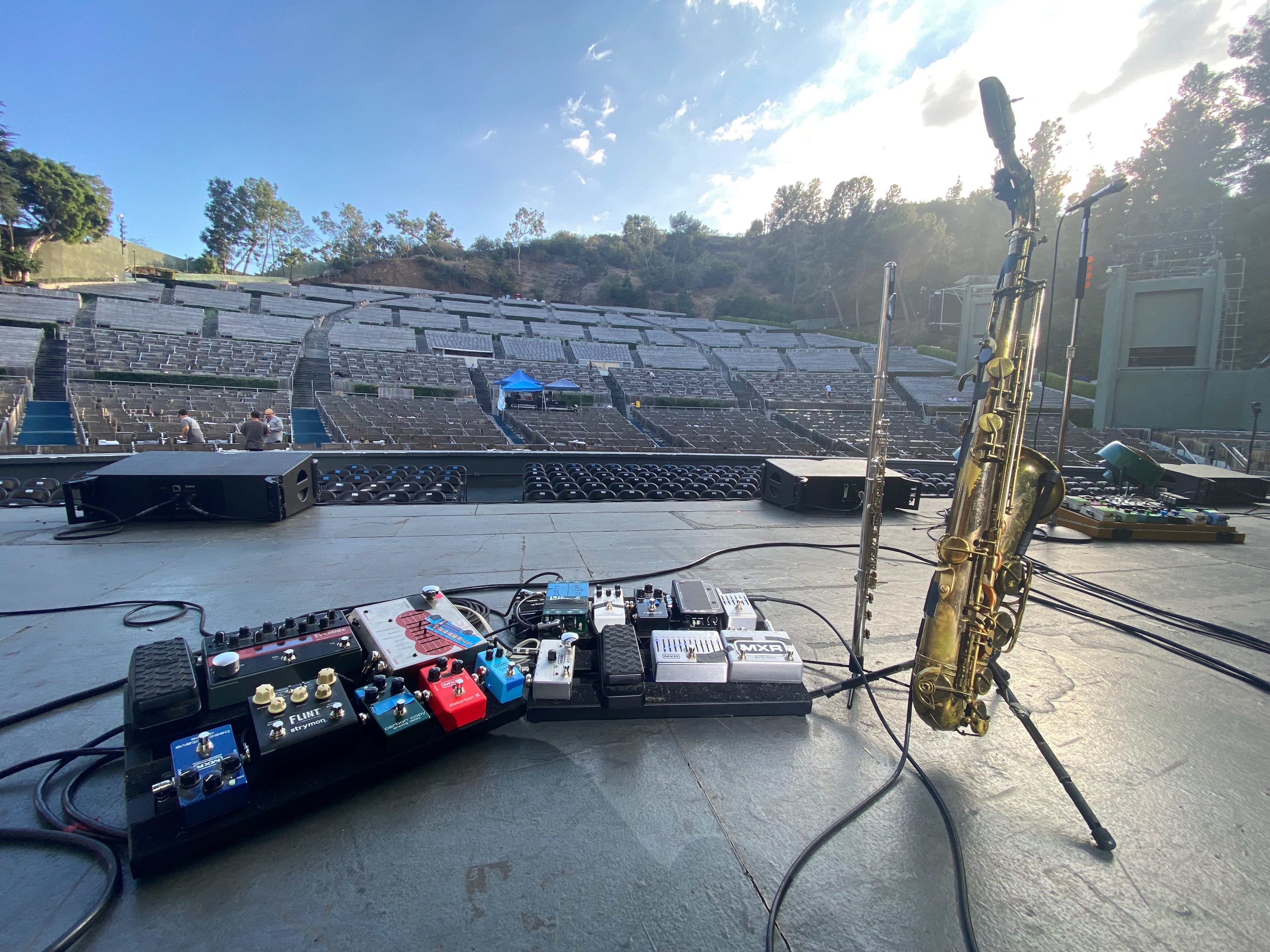
Sylvain's Setup During Sound-Check
If you are interested in diving into using effects with your woodwinds, the folks at Horn-Fx.com have developed a very thorough and comprehensive site with all sorts of resources and links to get you going.

About Sylvain Carton
Originally from France, Sylvain Carton is a multi-instrumentalist and composer residing in Los Angeles. An accomplished saxophonist, clarinetist, flautist, and guitarist, Sylvain has performed with Beats Antique, Aly and AJ, Lord Huron, John Vanderslice, Eddie Mitchell, The Japonize Elephants, The Mitch Marcus Quintet, Jessica Fichot, We Are the West, and Carolyna Picknick. As a composer he has placed music in feature films, national television and radio commercials, television shows, and independent releases. Sylvain manages the Vandoren Musician’s Advisory Studio in Los Angeles where he works with woodwind players of all kinds to help them find their perfect setup.